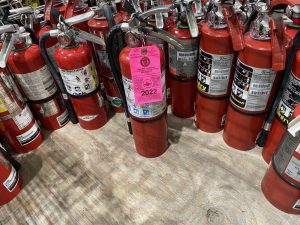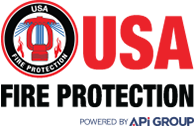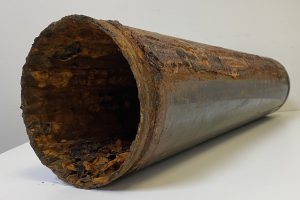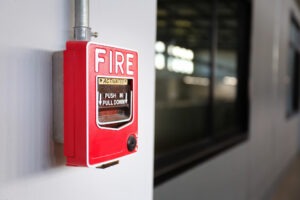Fire Protection Dictionary – 8 Fire Protection Terms You Should Know
Whether you are looking into fire protection system installation or are just interested in learning more about fire protection, it may be helpful to know a few key fire protection terms to help communicate your challenges and needs. Here is a quick list of terms that you should know:
1. Backflow
When water enters your home or business from the main water supply line, it should only flow in one direction. However, due to pressure changes in pipes, that water will sometimes flow backwards and seep back into the main water supply line. This phenomenon is referred to as backflow. Backflow is dangerous because it contaminates the water supply with toxins including fertilizers and pesticides, antifreeze liquids, and chemicals from soap or detergent. With proper testing and maintenance, these consequences can be prevented.
2. Clean Agents
A clean agent is a type of fire extinguishing agent that does not leave any residue when used; they make use of an inert gas or chemical that is discharged when a fire is detected. Clean agents are commonly used in areas that hold valuables such as server rooms, libraries, and even gas stations.
3. Corrosion
Corrosion is the deterioration of a material due to a chemical reaction. It is common in fire sprinkler systems and can be harmful. In some cases, it can cause obstructions, temporary system shutdowns, and in extreme cases, complete system failure. It is important to receive routine evaluations for corrosion to prevent potential issues.
5. Fire Pump
Fire pumps are essential components of a fire safety system. They are used to help distribute water throughout a sprinkler system by managing the water pressure to ensure every part of a building is protected in case of a fire.
4. Fire Extinguishers

Portable fire extinguishers are useful tools that may assist you in putting out small fires. There are different classes of fire (A, B, C, D, and K) and consequently different types of fire extinguishers. It is important to know which type(s) your home or business needs to treat the potential fire types.
6. NFPA
NFPA stands for National Fire Protection Association. This association is committed to eliminating death, injury, and property/economic loss due to fire related hazards. The NFPA delivers information and knowledge through developing codes and standards, research, training, and educational content.
7. Smoke Detectors vs Fire Alarms
These devices are often the first warning signs of a fire. A smoke detector is a local device, that emits a loud alarm when it detects the presence of smoke particles. On the other hand, a fire alarm is a system of sensors and devices that detect the presence of heat, carbon monoxide, or smoke. An alarm can be emitted from a fire alarm system manually or automatically.
8. Wet Pipe vs Dry Pipe Fire Sprinklers
There are several different types of fire sprinkler systems. Two of the most common types are:
- Wet Pipe Fire Sprinkler Systems: Fire sprinkler systems with water stored directly in its pipes. When the system detects a fire, water is discharged from its sprinkler heads.
- Dry Pipe Fire Sprinkler Systems: Dry pipe sprinkler systems are filled with pressurized air or nitrogen, rather than water. The dry-pipe valve prevents water from entering the pipe until a fire causes one or more sprinklers to operate. When activated the air releases and permits the water to flow into the piping system and out the opened sprinklers.
USAFP is comprised of a specialized team of professionals who can handle all your fire protection needs. If you would like to learn more about any of the terms above or potential services, give us a call at (844)-MYUSAFP or request a free quote here.


